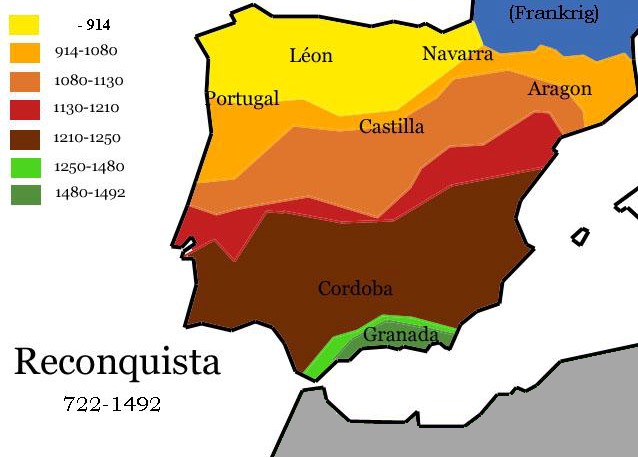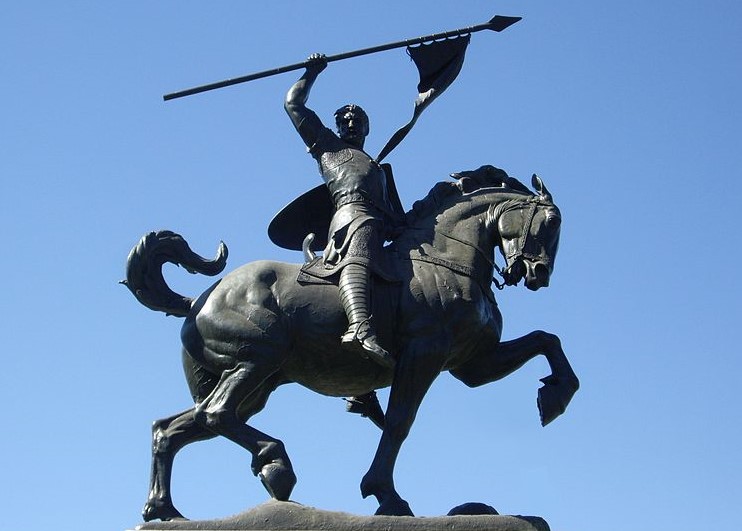To put things into perspective man has to know about the past. From the Romans to the present day, Spain has played an important role in the progression of the Western World. InSpain.news gives a resume of the history of Spain based on several (scientific) sources. This is part 6, about the Reconquista.
The Reconquista, the reconquering of Islamic occupied Christian territory, actually began in 722 with the battle at Covadonga. It received more impetus with the mutual division of the Islamic empire in the Iberian peninsula. For many centuries, part of the advance from the north was also caused by population pressure in the northern kingdoms, especially in Catalonia, the relatively open border allowing the population to migrate freely southward.
In the eleventh century, part of the northern border area was guarded by Christian tenants. Many struggles occurred between the Christian armies, not really a sign of unity against the Islamic enemy. 1337 saw the start of the civil war, which lasted 100 years.
El Cid
The militarily weak Islamic Taifa empires survived as long as they did by accepting the protection of the now powerful Christian Northern kingdoms, for payment. The legend of El Cid (the boss), Castilian nobleman Rodrigo Diaz, can be seen from a different perspective. Not so much a Christian hero who fought to expel the Moors from Spain, El Cid was a successful mercenary who served both Islamic as Christian rulers.
Eventually, El Cid became prince of the Taifa of Valencia – very successful indeed.
Almoravids, Almohaden
In 1085, Alphons VI of Castile conquered the city of Toledo, the former capital of the Catholic Visigothic Kings. Called for help, the Almoravids, a strict religious Berber group from Senegal and Niger, entered the Iberian peninsula in 1086. These Berber soldiers specialised in martial art, learning the art in fortified monasteries in north-west Africa for the purpose of a holy war. The tending power of the Taifas and their payments to non-believers, were a thorn in the side to the Almoravids.
The Almoravids fought the armies of Alphons VI and later conquered Seville. Al Andalus became part of the Almoravid empire that extended over north west Africa with Marrakesh as a capital. Among the fundamental Almoravids, religious oppositions expanded and armed Christian orders arose. These orders played an important role in the acceleration of the Reconquista. Their forts served to continue the monitoring of the conquered areas. The Almoravids soon fell into the same ways as their predecessors, giving way to decadence, new divisions and Taifas.
1492: Completion of the Reconquista
In 1146 and 1147, the armies of French-Spanish nobles conquered Cordoba and Almeria. Another Berber strain, the Almohades had to help the Almoravids, and established a new caliphate. After much struggle with changing opportunities, Islam lost the capital of Cordoba in 1236. By the year 1250, the Reconquista, other than the stronghold of Granada, was over.
In the emirate of Granada, Sultan Alhamar initiated the construction of the Alhambra, (pictured – now a UNESCO World Heritage Site), with the Albaicín neighbourhood sitting in its shadow. Granada survived as a vassal state of the Castilian kingdom, for payment, until 1492. With the conquest of Granada by the Catholic Kings (los Reyes Católicos) more than 750 years of Reconquista came to an end. Spanish replaced Arabic as the native language. The Catholics destroyed mosques or converted them into churches and basilicas.
Also read: Part 5, the Arabs; Part 4, The Visigoths; part 3, the Romans; part 2, the Phoenicians; part 1, prehistory & antiquity




